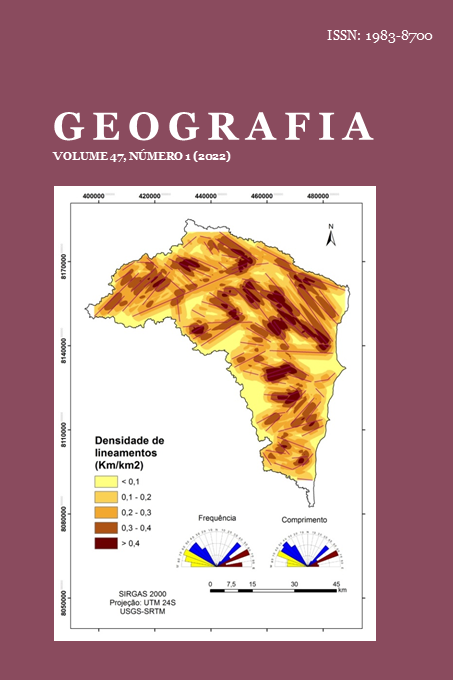PARTICIPATORY GEOGRAPHIC INFORMATION SYSTEM - P-GIS: A PROPOSAL FOR COLLECTIVE ACTION IN PUBLIC SCHOOLS FOR URBAN GOVERNANCE
DOI:
https://doi.org/10.5016/geografia.v47i1.16171Abstract
Knowing the physical space and the social and functional organization of the place where one lives can lead the citizen to exercise citizenship, and education plays an important role when building up this knowledge. One way of looking at this issue is through participatory mapping, a tool of social cartography. In digital cartography, the representation of geographic space adds the concept of geographic information systems – GIS - and remote sensing, so that when participatory mapping uses these concepts, participatory GIS (PGIS) comes up. Thus, the National Institute for Space Research, through the Laboratory for the Application of Spatial Data in Support of Society, enabled high school students from public schools in socially vulnerable areas in the municipality of São José dos Campos to use the P-GIS concept. The students identified and proposed public facilities for their respective territories and produced maps with digital cartographic accuracy as a result of their training in PGIS. This material assisted the students in reaching the public authorities and proposing the spatial (re)organization, corroborating the governance process.
Downloads
Published
Issue
Section
License
The authors maintain the copyright and grant GEOGRAFIA the right of first publication, with the articles simultaneously licensed under the Creative Commons BY 4.0 License, which allows sharing and adapting the articles for any purpose, as long as appropriate credits and provisions of image rights, privacy or moral rights. Other legal attributions can be accessed at: https://creativecommons.org/licenses/by/4.0/legalcode.en.
Geography, Rio Claro, SP, Brazil - eISSN 1983-8700 is licensed under the Creative Commons BY 4.0 License.





